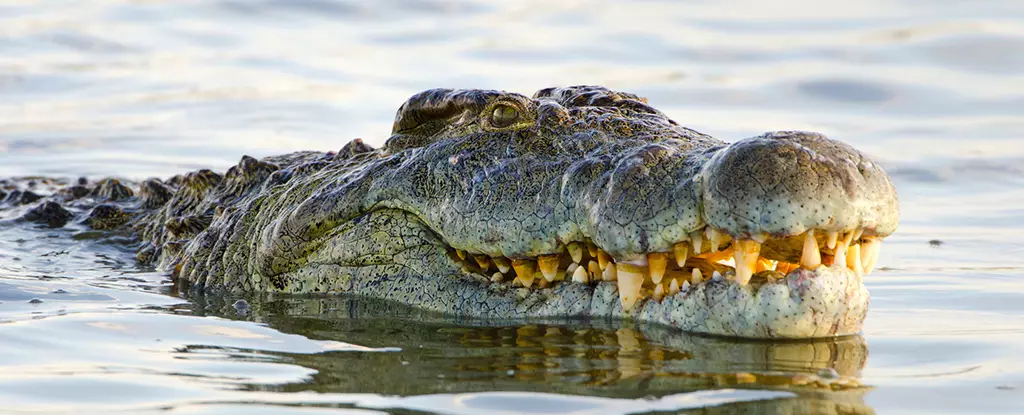The crocodile, one of the oldest living species on Earth, is renowned for its effectively terrifying appearance, characterized by its formidable jaws and signature wrinkled snout. This peculiar aspect of its anatomy is not merely cosmetic but rather serves significant biological functions. Recent studies by researchers at the Laboratory of Artificial and Natural Evolution (LANE) at the University of Geneva have peeled back layers of mystery surrounding the mechanics behind this reptilian smile. Understanding how the distinctive structures of a crocodile’s snout develop may shed light on broader biological principles, as well as highlight the distinct evolutionary pathways taken by various species.
Historically, biological features such as hair, feathers, and scales have been scrutinized for their origins and formation. In most vertebrates, structures like hair follicles and feather tracts are formed from specialized regions of the outer skin layer, specifically called placodes. The researchers observed that the irregular polygonal scales of crocodiles do not conform to this typical pattern; instead, they emerge through decompression and unique mechanical processes. This suggests the crocodile’s evolutionary path diverged significantly from that of other reptiles, presenting a case study in adaptive biology.
The evolution of these scales involves a highly sophisticated interplay between genetic coding and mechanical forces that operate even before the creature hatches. While previous assumptions leaned towards tensile stress as the main driver of scale formation—akin to the stretch marks often experienced by adolescents—the LANE team has revised this understanding. Their research indicates that compressive mechanical instabilities are fundamental in sculpting these iconic features.
This breakthrough arose from meticulous experimentation involving Nile crocodile embryos. By injecting these embryos with epidermal growth factor (EGF), the researchers manipulated the stiffness and growth rate of the epidermis. This manipulation led to a dramatic transformation in the patterns of the head scales, accentuating the mechanical properties of skin during the embryonic stage. The EGF treatment allowed scientists to glimpse into a process that usually would remain obscured within the confines of the egg.
Results revealed that juvenile crocodiles exhibit a distinct tapestry of scales, crafting a compelling portrayal of how their head structure emerges from complex skin folding. The head scales formed as the soft tissue matured faster than the underlying skeletal structures, causing dramatic folds akin to those seen in shar pei puppies—an intriguing parallel that highlights the diversity of biological adaptations.
The research has broader implications beyond the crocodile itself. It indicates that the variety of head-scale patterns seen across different crocodilian species could stem from unique evolutionary adaptations. Essentially, different species may have adapted their scale patterns to their environmental contexts, further emphasizing the diversity of life forms and their intricate evolutionary paths.
The study’s findings challenge previously held notions about reptilian morphology and the dynamics of formation processes. By highlighting how compressive forces rather than tensile forces sculpted these patterns, this research reconfigures our understanding of evolution and development within the reptilian lineage.
As scientists continue to unravel the complexities of reptilian development, the crocodile serves as a fascinating case study in evolutionary biology. Its unique facial structure encapsulates a blend of mechanical engineering, genetic control, and environmental adaptation. Each discovery adds depth to our awareness of life’s intricacies and the adaptive mechanisms that facilitate survival through time.
As we peel back the layers of scientific inquiry, we venture closer to comprehending not just how the crocodile got its unique smile, but also the broader implications that these revelations hold for our understanding of evolution, development, and the perpetual interplay between biology and environment. This journey serves as a reminder of the continuous evolution of knowledge and the innovative minds dedicated to uncovering the secrets of our natural world.


Leave a Reply